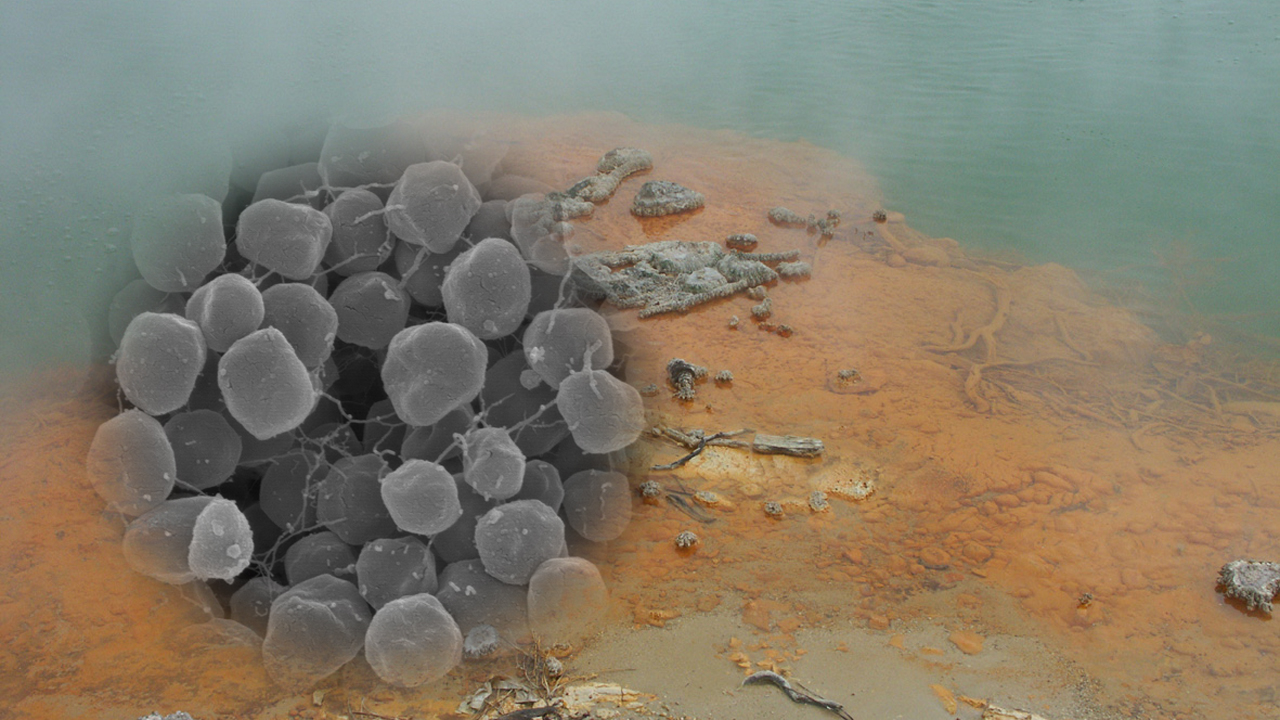
Project on microorganisms
Saci, the bio-factory
- von Ulrike Bohnsack
- 25.02.2020
Little helpers with great effects: microorganisms produce food, medicine, chemicals and many other valuable products. In industry, they are used as mini factories for developing and improving products or increasing process efficiency. A new biotechnological research project focusses on a particularly robust microbe, Saci - Sulfolobus acidocaldarius to be precise. It is to assist in the utilisation of industrial waste products such as CO2 or glycerol. The ‘HotAcidFACToRY’ project is coordinated by the UDE and receives 2.2 million euros from the Federal Ministry of Education and Research.*
Yeast and bacteria such as Escherichia coli and Bacillus subtilis are among the most widely used microorganisms in industry. Their properties are transferred or modified so that they transform substrates into value-added products or produce enzymes. However, their range of application is limited: yeast and bacteria cannot survive in high temperatures or low pH, i.e. acidic environments.
Archaea could serve as a promising alternative. ‘Many of these unicellular organisms can adapt to extreme habitats. They possess unique metabolic traits and robust enzymes’, Professor Bettina Siebers explains, ‘and yet their great biotechnological potential has been neglected so far. We would like to change this with our project.’
Professor Siebers is an expert in molecular enzyme technology and biochemistry and coordinates the ‘HotAcidFACTORY’ project supported by her UDE colleagues Markus Kaiser (Biological Chemistry) and Oliver Schmitz (Applied Analytical Chemistry). Researchers of the Universities of Freiburg and Bielefeld and TU Wien are also involved in the project.
The team wants to establish Sulfolobus acidocaldarius, or in short: Saci, as a bio-factory. This organism is a member of the Archaea with optimal growth at temperatures between 75 and 80 °C and a pH between 2 and 3, which is similar to lemon juice. It is not pathogenic and thus does not entail any health risks. Saci is found naturally in acidic hot springs in the Azores or Iceland, for example.
In their laboratories, the scientists aim to design Saci so that it can process industrial waste and transform it into new products such as bio-acids or bio-alcohols. ‘We want to modify Saci to enable CO2 fixation. Thus, the greenhouse gas released during numerous industrial processes is integrated into its metabolism’, Bettina Siebers continues, ‘alternatively, it can be made to live and feed on glycerol. This plant-based waste product is formed during the production of bio-fuels and is of interest for various applications.’
*HotAcidFACTORY (Sulfolobus acidocaldarius as a new thermoacidophile biological factory) is a three-year project, which is funded by the ‘Microbial factories for industrial bioeconomy—new platform organisms for innovative products and sustainable bioprocesses’ (Mikrobielle Biofabriken für die industrielle Bioökonomie – Neuartige Plattformorganismen für innovative Produkte und nachhaltige Bioprozesse) programme of the Federal Ministry of Education and Research. The UDE will receive 1.4 million of the total funding of 2.2 million euros.
Photo:
The montage shows the Champagne Pool (Waiotapu geothermal area, New Zealand) and - in the round picture - a collection of Saci cells as they occur there.
For further information, please contact:
Prof. Dr. Bettina Siebers, Molecular Enzyme Technology and Biochemistry, phone: 0201/18 3-7061, bettina.siebers@uni-due.de
Editor: Ulrike Bohnsack, phone 0203/37 9-2429, ulrike.bohnsack@uni-due.de
Translator: Carmela Welge, carmela.welge@uni-due.de
